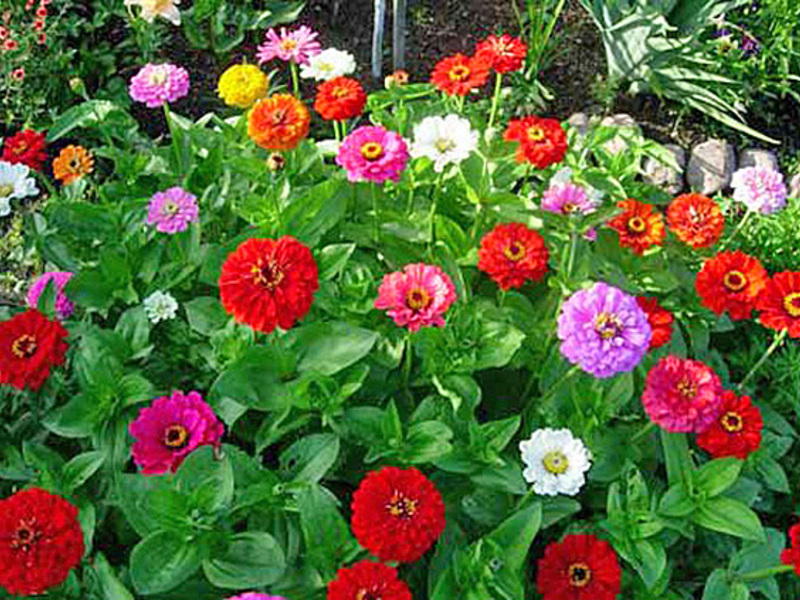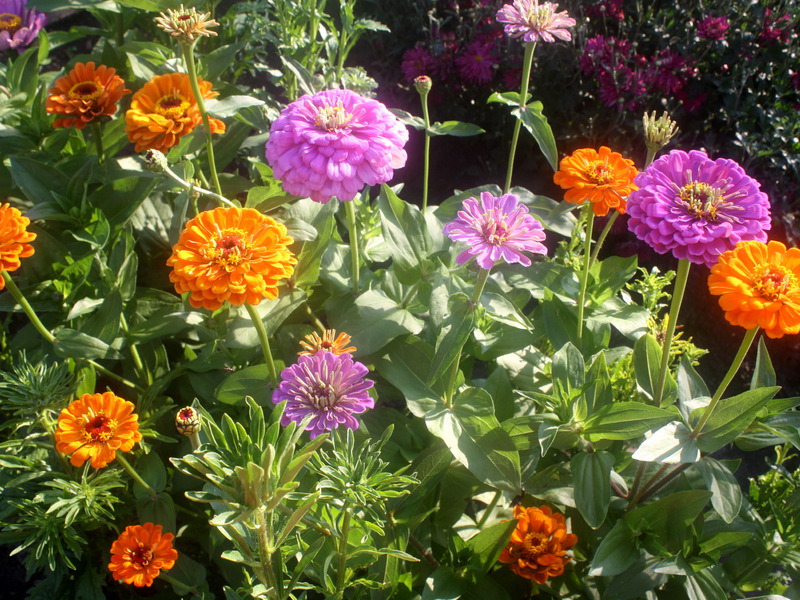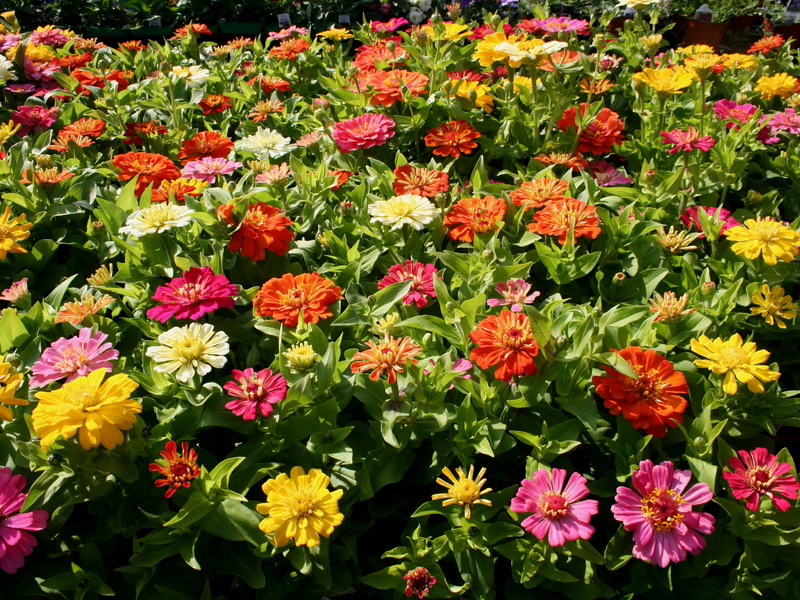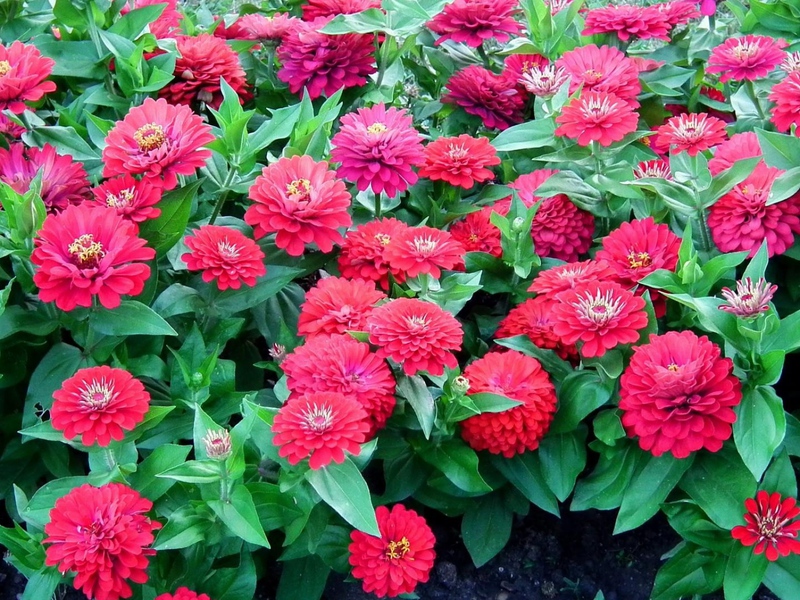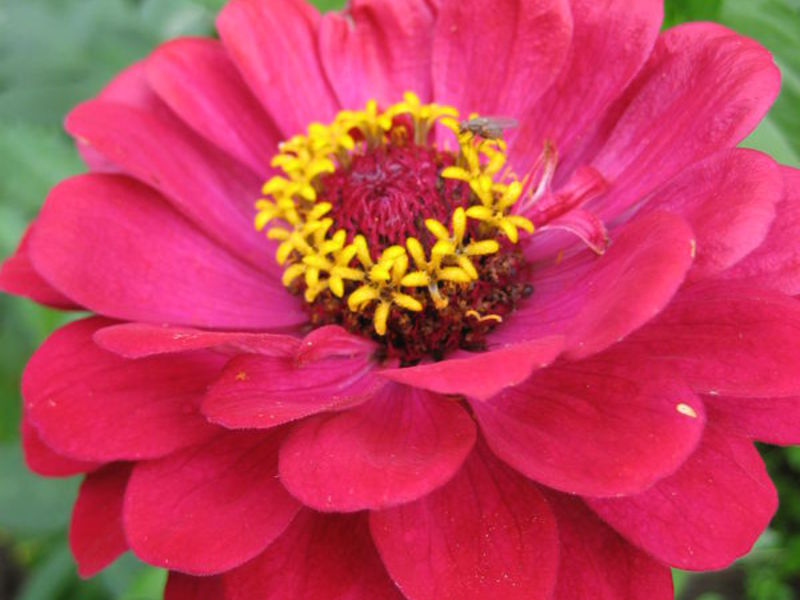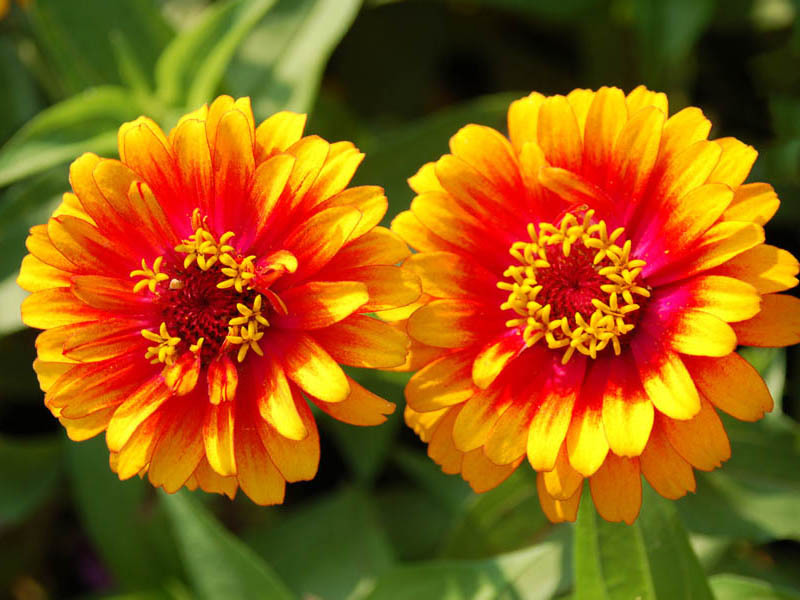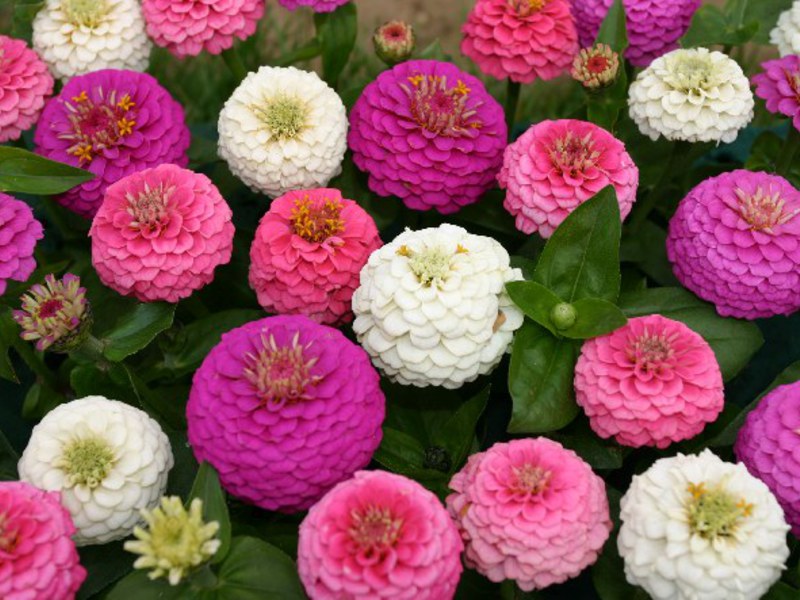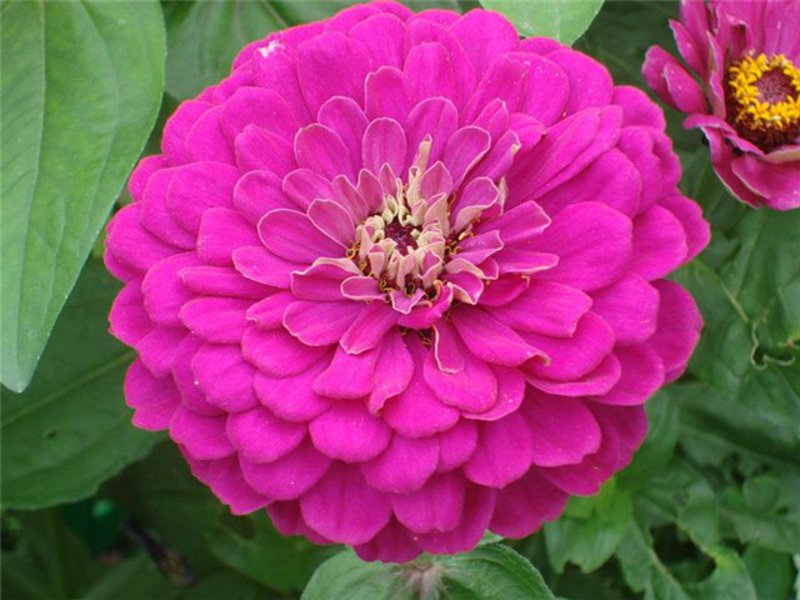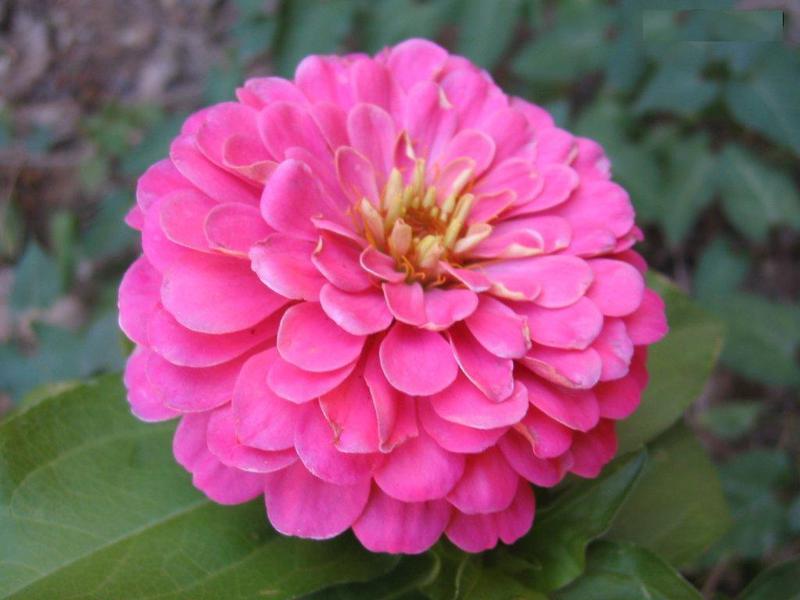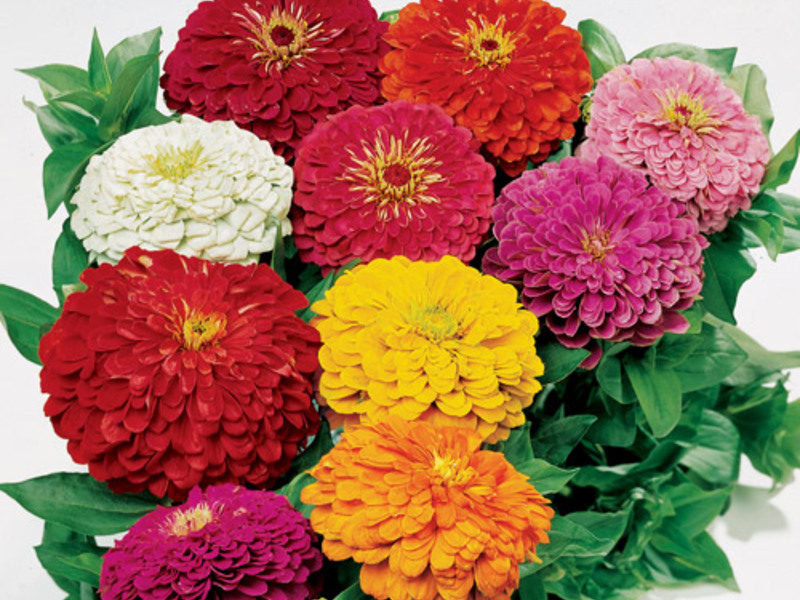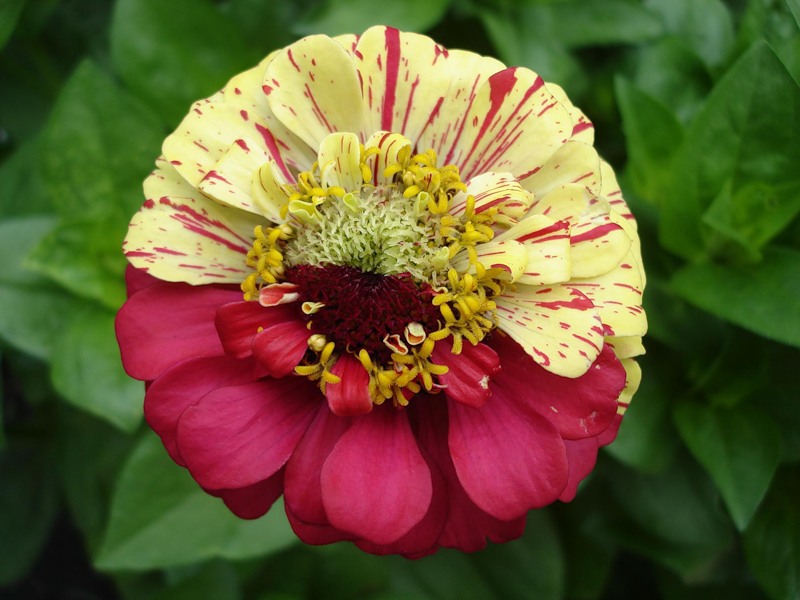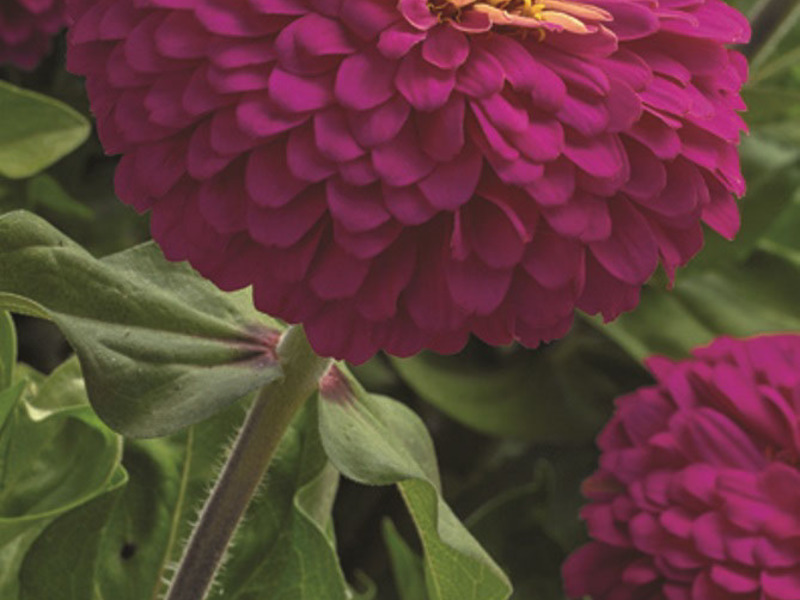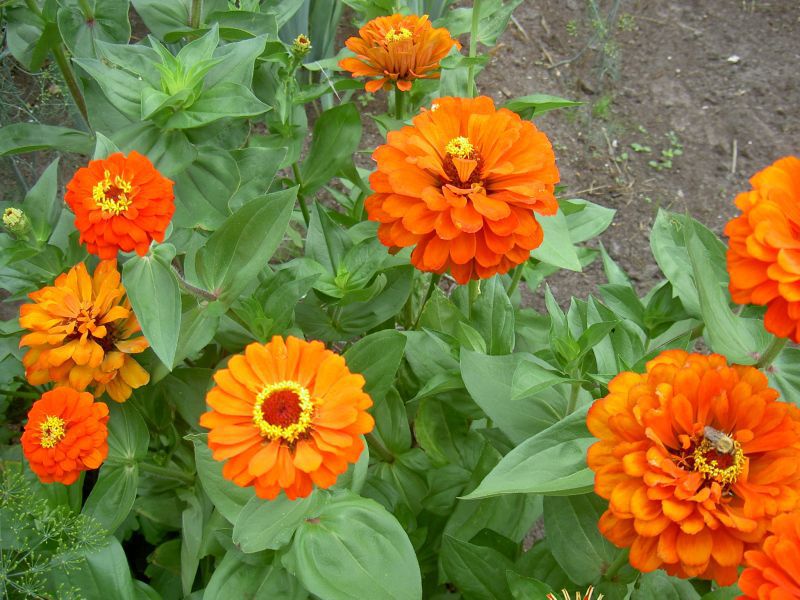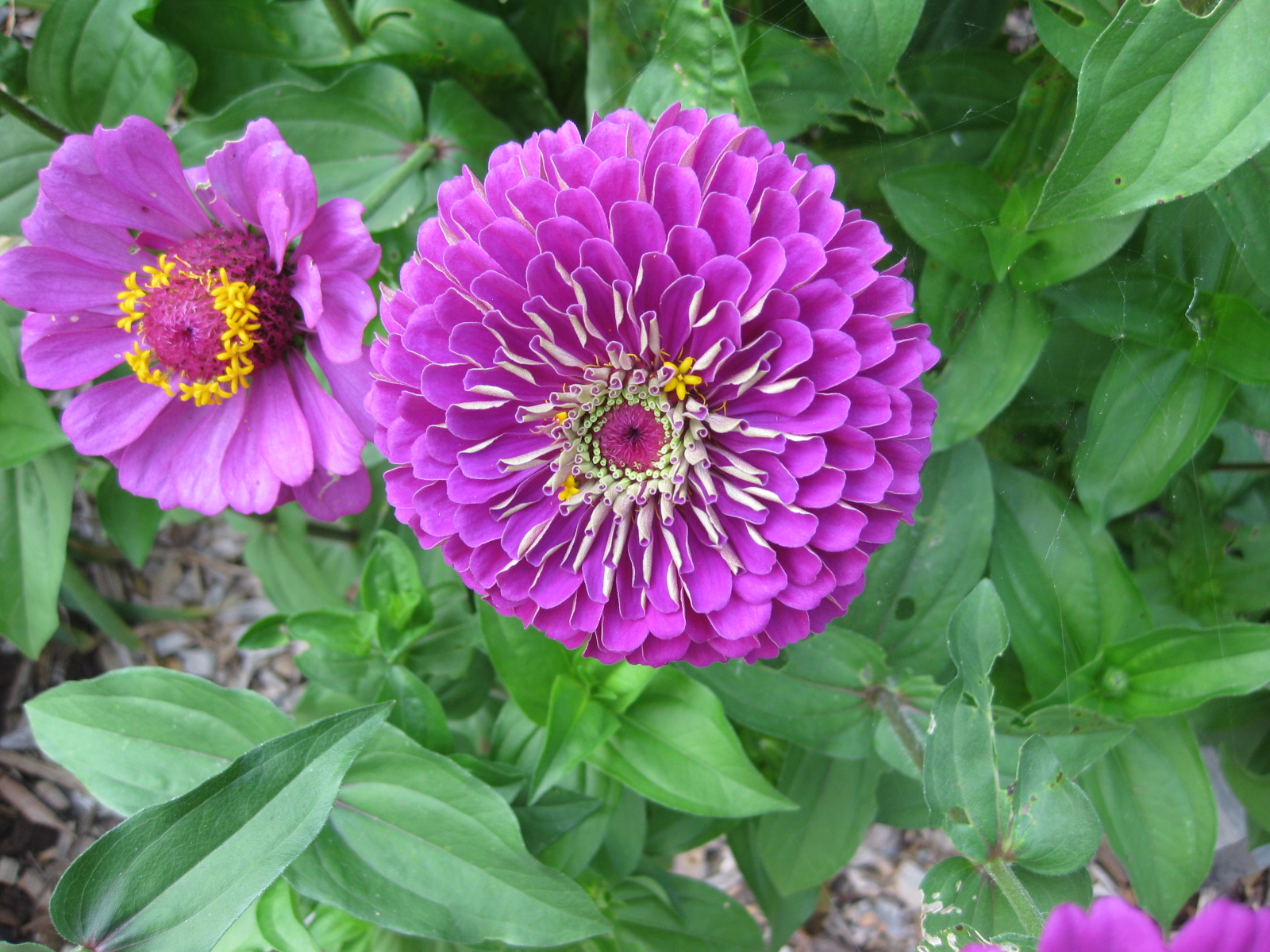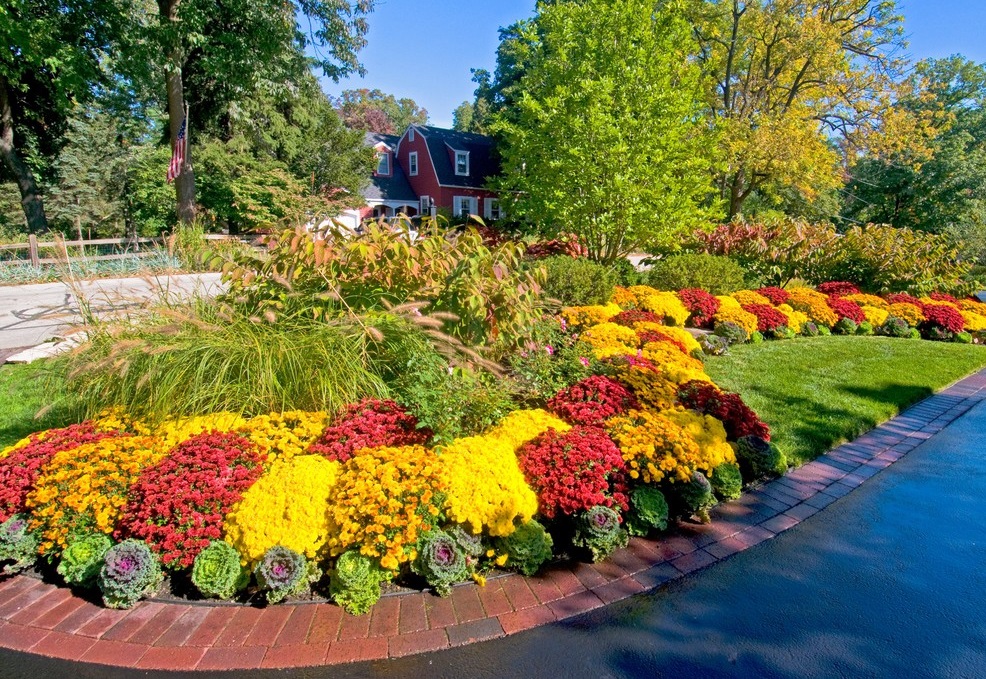Zinnia is a plant with many virtues. And the main one is the rich color palette, which is not provided here for disguise. Whichever location is chosen for this blue and blue-flowered plant, it will in any case become attractive at the time of flowering zinnia.
This plant can be grown as an annual or perennial, and bush-shaped... Under natural conditions, this representative of the Compositae family grows in Central and South America. Its decorative properties are given by leaves that have an oval-ovoid shape, characterized by a sessile, whorled arrangement, the inflorescences formed in the process of development are presented in the form of single pictures.
Zinnia got its name in honor of Doctor of Medical Sciences Professor Göttingen Johann Gottlieb Zinna. After all, it is he who owes the merit that in 1796 this plant came to Europe. Botanists and breeders have done a good job in recent years, and today more than 20 species of zinnia have been bred. But among them, only two are cultivated - narrow-leaved and graceful... It was they who served as the basis for breeding garden plants, which were able to offer flower growers many cultivars and forms.
Content
What does blue mean?
 For many, it is associated primarily with serenity, tranquility and coolness. Observing the blue flowers, you can experience inexpressible delight. Moreover, this opinion is shared not only by amateur gardeners, but also by specialists. These plants have almost the same effect as the sky or water on a sunny day. However, in nature, blue flowers are very rare. Most likely, this is what makes them so attractive to most of us, because a person, as a rule, is drawn to everything unusual and rare.
For many, it is associated primarily with serenity, tranquility and coolness. Observing the blue flowers, you can experience inexpressible delight. Moreover, this opinion is shared not only by amateur gardeners, but also by specialists. These plants have almost the same effect as the sky or water on a sunny day. However, in nature, blue flowers are very rare. Most likely, this is what makes them so attractive to most of us, because a person, as a rule, is drawn to everything unusual and rare.
Symbols of blue (light blue) flowers
The nascent and flourishing life can be described by various symbols, among which the blue flower is not the last. Particularly attractive is the star-like structure of the petals. So its easy mistaken for sun, earth circle or center... These blue flowers are not only among the first to signal the arrival of spring, but are also associated with carnal pleasure, vitality and joy of life. This plant is a symbol of the end of winter and the celebration of the victory over death.
There was a place for these flowers in Christianity: in its symbolism, the cup of a flower open upwards can be described as the acceptance of the gift of God and the delight of a child from the nature seen in paradise. Familiar with these flowers and the Aztecs, for whom they are a symbol of the joy of life and the frailty of being.
Types and varieties of zinnias with blue flowers: names and photos
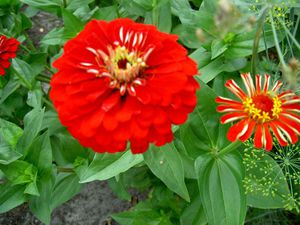 The genus of zinnia includes many varieties and species, but the most interesting are those that have been domesticated. There are also blue flowers among them. Names and photos will say little if you do not know about their features.
The genus of zinnia includes many varieties and species, but the most interesting are those that have been domesticated. There are also blue flowers among them. Names and photos will say little if you do not know about their features.
Zinnia is graceful. A characteristic feature of this species is powerful and strong stem, in which, in the process of growth, erect, strong pubescent shoots are formed, growing up to 1 meter in height. The main decoration is large inflorescences with a diameter of 15 cm, which can provide a variety of colors. As a cultivated variety, this variety has been cultivated in Europe for over 200 years.
Zinnia is narrow-leaved. This species grows in the form of a branched upright shrub, reaching a height of 45 cm. On the shoots, medium-sized yellow inflorescences are formed. For the first time, this species was included in the number of cultivated plants 150 years ago.
Varieties
Speaking about the variety of zinnia, it is necessary to pay attention to its varieties, of which it has a lot. Zinnias with blue flowers are attractive, and their names also sound nice.
One of the signs of their separation is the height, in accordance with which it is possible to distinguish the following types of plants:
- dwarf. Limited in height up to 30 cm;
- medium-sized. For them, the limit is a height of 70 cm;
- tall. Most of the species in this group are more than one meter in height.
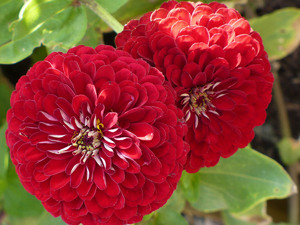 But first of all, zinnia varieties are distinguished by a rich color palette that literally boggles the imagination. Its inflorescences are often very bright and rich, or may have a more moderate design, represented by calm, pastel colors... Reed flowers differ not only in shape, but also in location: non-double flowers go in two or three rows, and double flowers form even more such rows. The characteristic color of tubular flowers is yellow. It is not so common to find zinnia varieties that have the same shade as the reed flowers. Most often they are presented in the form of a convex center, pleasant to the eye.
But first of all, zinnia varieties are distinguished by a rich color palette that literally boggles the imagination. Its inflorescences are often very bright and rich, or may have a more moderate design, represented by calm, pastel colors... Reed flowers differ not only in shape, but also in location: non-double flowers go in two or three rows, and double flowers form even more such rows. The characteristic color of tubular flowers is yellow. It is not so common to find zinnia varieties that have the same shade as the reed flowers. Most often they are presented in the form of a convex center, pleasant to the eye.
Another sign of the classification of blue zinnias is the structure and shape of the inflorescences. Those allocated within its group have a special name - varieties. In our country, dahlia and pompom varieties are most often found. In addition to them, varieties are widespread, representing the group of chrysanthemum and scabiozoa.
Dahlia zinnias. In these blue plants, the reed flowers have a classic design, except for their shape, which is elongated-lobed. Terry inflorescences with a hemispherical shape look original. They reach 15 cm in diameter, one plant can forming up to 28 flowers... Within this group, one can distinguish plants that differ in their height. The most famous tall variety of dahlia zinnias is Benary's Giants Series. Usually it grows up to 120 cm and is decorated with baskets of a wide variety of shades - white, pink, salmon, blue and light blue, raspberry and red, yellow, etc.
- Often in the areas of flower growers you can find medium-sized blue and blue dahlia zinnias. Mainly in our country, the Rosa variety is grown with gorgeous pink flowers.
- He is accompanied by Orange Kеnig and Tango, Scharlach, which are decorated with flowers of a deep red-orange hue. The Crimson Monarch variety, which stands out with dark red inflorescences, has no less bright design.
- Varieties Purple Prinse and Cherry Queen - they show their decorative character thanks to flowers that have purple and dark cherry color.
- Lavandelkonigin cultivar. The originality of this variety is given by the lavender-colored baskets with a purple tint.
- Violett variety. This zinnia differs from many of its congeners due to its purple baskets.
At the same time, it is customary to distinguish many other varieties in it, which differ in the original color of flowers.
- a striking example of this is the Polar Bear variety, the flowers of which are colored in the form of a combination of white and green, as well as the Envy variety, whose inflorescences have a rich green color;
- Recently, variegated zinnias have become popular, including the Peppermint Stick. They owe their attractiveness to linguistic flowers that are red, cream or yellow-green;
- along with them, undersized zinnias look beautiful, among which the Magelan series looks the most impressive;
- Peter Pan and Short Staf. Their advantage is the amazingly beautiful densely double inflorescences with a diameter of 10 cm and a rich color palette, including white, cream, yellow, bright red, raspberry and cherry shades;
- Swizzle series. These zinnias are represented by a pair of two-tone twin hybrids - Cherry Ivory, which is adorned with cherry blossom baskets and cream-topped petals, and Scarlet Yellow, which has red-colored baskets and bright yellow tips.
Pompom zinnias... The main feature of these plants is abundant and simultaneous flowering. They form round-shaped double flowers, growing in diameter up to 6 cm.The following varieties clearly demonstrate the decorative properties of these zinnias:
- medium-sized Rotkopchen and Tom-Thumb, which are decorated with bright red baskets;
- undersized Zinnita, whose inflorescences can vary from white to yellow and red.
Chrysanthemum zinnias. A distinctive feature of these plants is associated with language flowers, which are presented in the form of rolled tubes bent in different directions. Their baskets have a diameter of 15 cm, and one plant forms more than 20 pieces per season. Bright representatives of this group of zinnias are medium-sized varieties of the New Burpee’s Hybrids and Fantasia series, in which the color scheme can include shades from white and pink to bright yellow, dark red and purple.
Features of agricultural technology
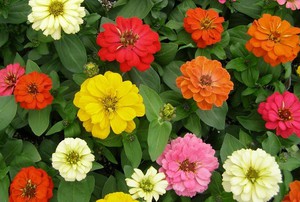 Mostly blue and blue zinnias are annual crop, which is unpretentious in cultivation. The plant tolerates long periods of drought well and can grow in any type of soil. For many seasons, they show a long and abundant flowering, they can reproduce with the help of seeds. The latter are rather large: 1 gram contains 100 seeds.
Mostly blue and blue zinnias are annual crop, which is unpretentious in cultivation. The plant tolerates long periods of drought well and can grow in any type of soil. For many seasons, they show a long and abundant flowering, they can reproduce with the help of seeds. The latter are rather large: 1 gram contains 100 seeds.
They reach the stage of technical maturity 55 days after the beginning of flowering. They remain germinating for 3 years from the date of collection. Many seeds are on sale in the form of mixtures of varieties, but in recent years, high-quality pure-variety seed material has become available to flower growers.
Agrotechnology for growing blue and blue zinnias involves sowing seeds in open ground in the beginning of May. Subsequently, when shoots begin to appear, they are thinned out. The seedling method of growing blue and blue zinnias is less common. However, zinnia has certain disadvantages that can make it difficult for growers to grow them. First of all, this is a strong dependence on air temperature - plants do not tolerate even slight frosts. Therefore, gardeners who live in more northern regions, where cold return often occur, are advised to use the seedling method.
Conclusion
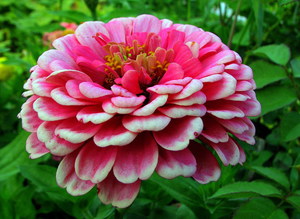 Zinnia is one of the brightest ornamental plants that has taken root well in our climate. Its main advantage is unusual color, thanks to which these flowers are used for decorative purposes. Due to the fact that in recent years many new varieties and types of zinnias, including blue and blue, have been bred, today it has become possible to create especially unique flower arrangements.
Zinnia is one of the brightest ornamental plants that has taken root well in our climate. Its main advantage is unusual color, thanks to which these flowers are used for decorative purposes. Due to the fact that in recent years many new varieties and types of zinnias, including blue and blue, have been bred, today it has become possible to create especially unique flower arrangements.
And whichever place is chosen for planting, blue and light blue zinnias will in any case be able to decorate even the most ordinary-looking piece of land. But when grown in open ground, you need to remember that these plants do not tolerate even the slightest cold snaps. Therefore, to protect them from frost, it is recommended to use the seedling growing method.
